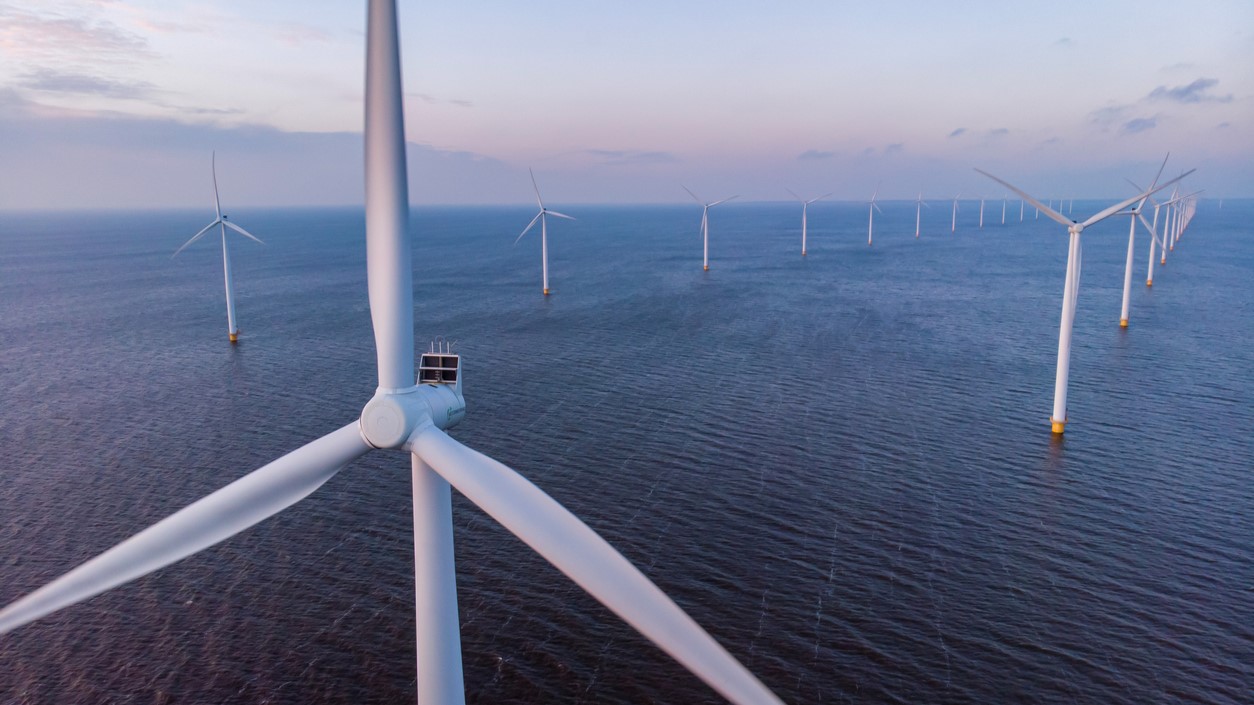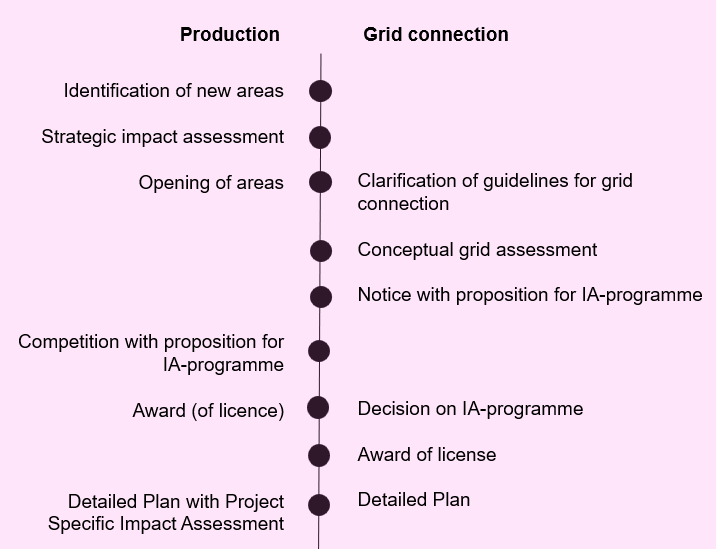Proposal for amedments to the administrative process for offshore wind
The Norwegian Water resources and Energy Directorate (NVE) proposes amendments to the administrative process for offshore wind, including grid connection, aimed at the 2025 competition for new areas

On 15 December 2023, NVE published a new report, based on a request from the Ministry of Petroleum and Energy (MPE), proposing amendments to the administrative process for licensing offshore wind projects, including grid connection. The report addresses the regular process under the Offshore Energy Act (Nw. Havenergilova), where an area must first be opened, prior to being awarded, in accordance with Section 2-2 of the Offshore Energy Act. The report does not give any guidance for possible projects to be handled under the exception of the opening of areas in accordance with section 2-2 fourth paragraph.
The proposal from NVE is first and foremost aimed at the next round of opening of areas, expected in 2025. NVE states that the main goal of the proposed administrative process is to ensure that the decisions made by the authorities have a sufficient factual basis, to ensure that all affected interests are involved and heard, and to give the project owners more predictability.
The new proposed process is illustrated by NVE in the following flowchart:

As the flowchart shows, NVE has considered how to harmonize the grid connection process and the licensing process for the offshore wind project in order for both to be ready for simultaneous commencement of construction.
In our view, the three most important proposals from NVE are:
- The facility license is to be awarded when the competition process is finalized (award of an area), and prior to the project-specific impact assessment, which is to be conducted together with the detailing of the project. The proposal entails that today’s system with notification of the project is to be removed, and the award and facility license is to replace the notification prior to a project-specific impact assessment. This requires that the awarded areas are large enough for the detailing process to be able to ensure co-existence with potential other affected interests in the areas. It also entails that the initial strategic impact assessment prior to the opening and awarding of an area must be thorough enough to ensure that there are no showstoppers.
- Regardless of the final ownership and grid solution, Statnett should initiate the grid connection process for the offshore wind projects in the opened areas. This will allow for the grid connection process to start prior to awarding the area and a facility license for a specific project.
- NVE proposes that the process in accordance with the Energy Act for the onshore side of the grid connection, and the Offshore Energy Act for the offshore side of the grid connection, hereunder the detailed plan for the placement of the infrastructure, should be assessed together in one process.
In addition to these three amendments to the process, NVE makes some principled statements regarding ownership and development of the offshore grid in their report. First of all, NVE states that it should be clear what kind of grid elements the project developer is expected to own prior to the award process, in order for all potential applicants to calculate their potential grid costs to some extent. This will, in our opinion, definitively give some more predictability for the developers, compared to the opening and awarding process practised for Sørlige Nordsjø II (SN II) thus far. However, the proposal does not entail that all costs and final solutions will be finalized prior to the award of the facility license. The report does not consider the topic of grid investment contributions for the parts of the grid connection planned to be owned by Statnett either. In our opinion, this should be clarified prior to the 2025 opening of areas.
NVE expresses in its report that the Energy Act (and Offshore Energy Act) do not set any ownership requirements for the customer-specific grid infrastructure, such as the grid connection for most offshore wind projects to begin with. However, where it is probable that there will be more than one user of the grid connection and/or transformer capacity, NVE is of the opinion that Statnett should be the owner of the grid infrastructure.
NVE’s report also proposes that MPE should be the licensing authority for the hybrid grid connections, as the question of whether hybrid connections are favourable is more of a political character. NVE states that Statnett and MPE should clarify whether a project will be awarded a hybrid connection prior to the opening of the bidding/competition process in accordance with the Offshore Energy Act section 2-3. NVE does not propose any changes to the MPE’s previously expressed assumption that Statnett will be the owner and developer of the hybrid grid connections for offshore projects.
NVE points to several necessary amendments in the wording in the Offshore Energy Act, first and foremost in Section 2-3, in order to implement the proposals in the report. The provision in Section 2-3 currently entails that the award of an area gives the project developer a time-restricted exclusive right to conduct an impact assessment and apply for a facility license. The provision will have to be amended to ensure that the award of an area automatically leads to a facility license, for no notification to be necessary, and for the project-specific impact assessment to be conducted as a part of the detailed plan for the project.
Furthermore, NVE proposes introducing new provisions to the Offshore Energy Act, regulating Statnett’s obligations and responsibilities in the offshore grid development process.
NVE does not propose specific wording for the necessary amendments to the Offshore Energy Act in their report, leaving this to be drafted by MPE. NVE furthermore states that MPE should involve the renewables sector in the further work and detailing of the necessary amendments. We will be following the process closely.

